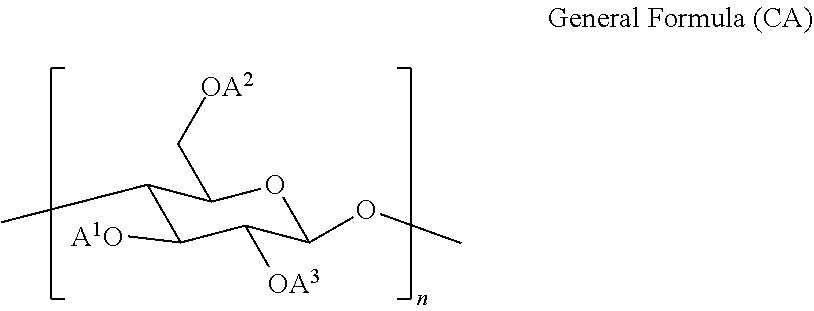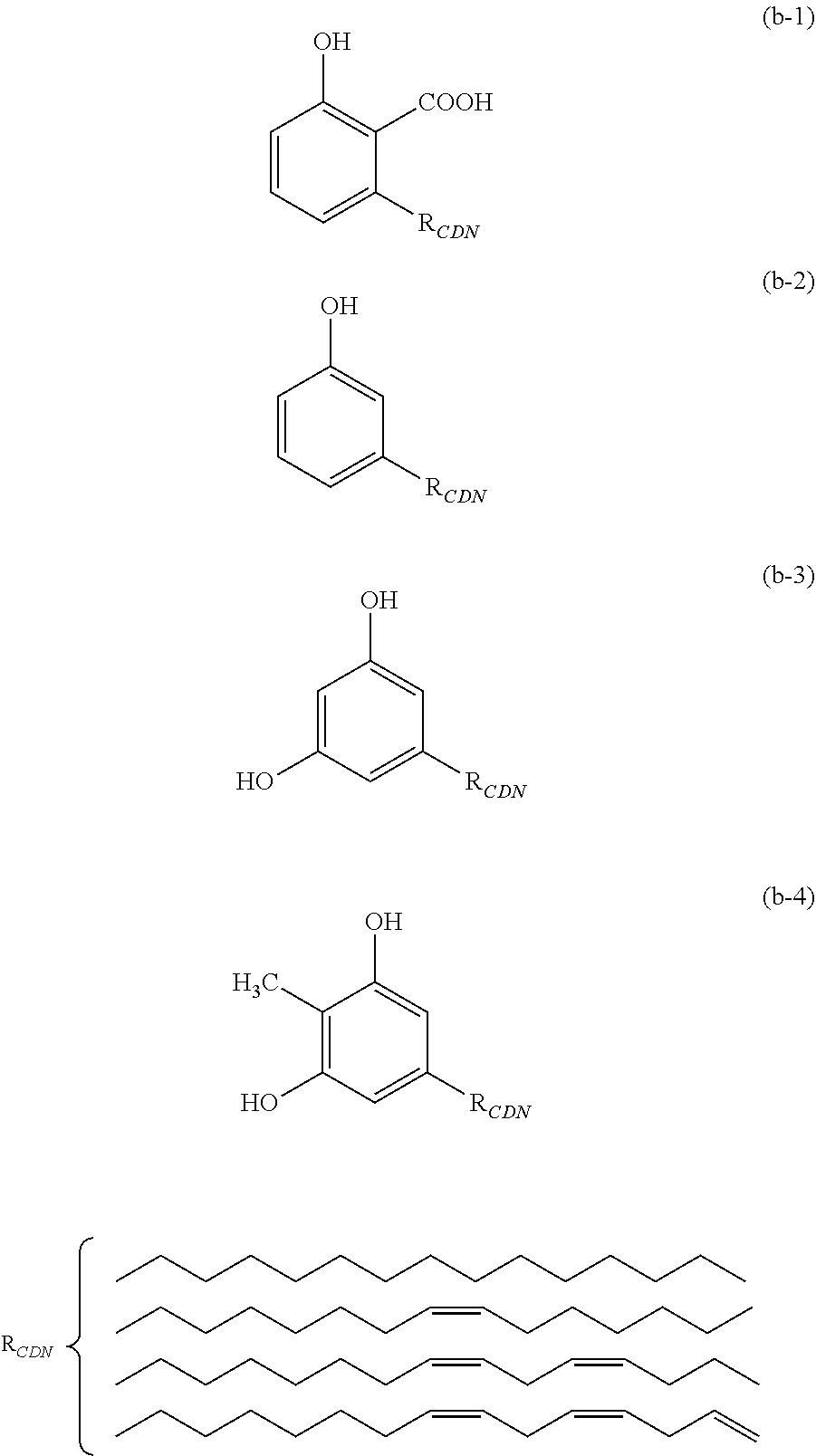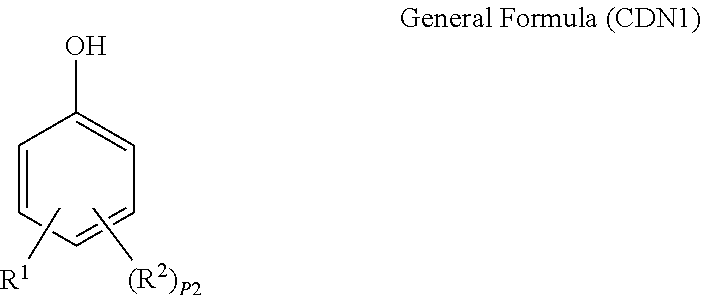Resin composition and resin molded product
- Summary
- Abstract
- Description
- Claims
- Application Information
AI Technical Summary
Benefits of technology
Problems solved by technology
Method used
Image
Examples
first exemplary embodiment
[0016]The resin composition according to the first exemplary embodiment contains a cellulose acylate (A) and an aromatic compound (B) not containing a functional group that reacts with the cellulose acylate (A), but containing a long-chain aliphatic group and at least one of a phenolic hydroxy group and a monoglycidyl ether group directly bonded to an aromatic group of the aromatic compound (B).
[0017]A mass ratio (B) / (A) of the aromatic compound (B) to the cellulose acylate (A) is 0.15 or more.
[0018]Here, in recent years, for the purpose of building a sustainable society for preventing global warming and protecting depleted resources, resin compositions containing bio-derived components instead of petroleum have been widely used.
[0019]In particular, environmental pollution and biological system destruction represented by marine plastic waste have occurred, so that a bio-derived and biodegradable resin molded product has been demanded.
[0020]On the other hand, many biodegradable resin...
second exemplary embodiment
[0030]The resin composition according to the second exemplary embodiment contains a cellulose acylate (A) and an aromatic compound (B) not containing a functional group that reacts with the cellulose acylate (A), but containing a long-chain aliphatic group and at least one of a phenolic hydroxy group and a monoglycidyl ether group directly bonded to an aromatic group of the aromatic compound (B).
[0031]The solubility of the resin composition in methyl ethyl ketone at a liquid temperature of 25° C. is 200 mg / ml or more.
[0032]From the resin composition according to the second exemplary embodiment, a resin molded product with high biodegradability may be obtained with the above configuration. The reasons are presumed as follows.
[0033]The cellulose acylate (A) is difficult to dissolve alone in methyl ethyl ketone. On the other hand, the resin composition in which the aromatic compound (B) is mixed with the cellulose acylate (A) has an increased solubility in methyl ethyl ketone.
[0034]Whe...
examples
[0174]Hereinafter, the resin composition and the resin molded product according to the present exemplary embodiment will be described more specifically with reference to Examples. Materials, used amounts, ratios, processing procedures, and the like shown in the following Examples may be appropriately changed without departing from the spirit of the present invention. Therefore, the resin composition and the resin molded product according to the present exemplary embodiment should not be interpreted in a limited manner by the following specific Examples.
[0175]The following materials are prepared.
[Cellulose Acylate (A)]
[0176]CA1: Eastman Chemical “CAP482-20”, cellulose acetate propionate, having a weight average degree of polymerization of 716, a degree of acetyl group substitution of 0.18, and a degree of propionyl group substitution of 2.49.[0177]CA2: Eastman Chemical “CAP504-0.2”, cellulose acetate propionate, having a weight average degree of polymerization of 133, a degree of ace...
PUM
| Property | Measurement | Unit |
|---|---|---|
| Temperature | aaaaa | aaaaa |
| Density | aaaaa | aaaaa |
| Particle diameter | aaaaa | aaaaa |
Abstract
Description
Claims
Application Information
 Login to View More
Login to View More - R&D
- Intellectual Property
- Life Sciences
- Materials
- Tech Scout
- Unparalleled Data Quality
- Higher Quality Content
- 60% Fewer Hallucinations
Browse by: Latest US Patents, China's latest patents, Technical Efficacy Thesaurus, Application Domain, Technology Topic, Popular Technical Reports.
© 2025 PatSnap. All rights reserved.Legal|Privacy policy|Modern Slavery Act Transparency Statement|Sitemap|About US| Contact US: help@patsnap.com



